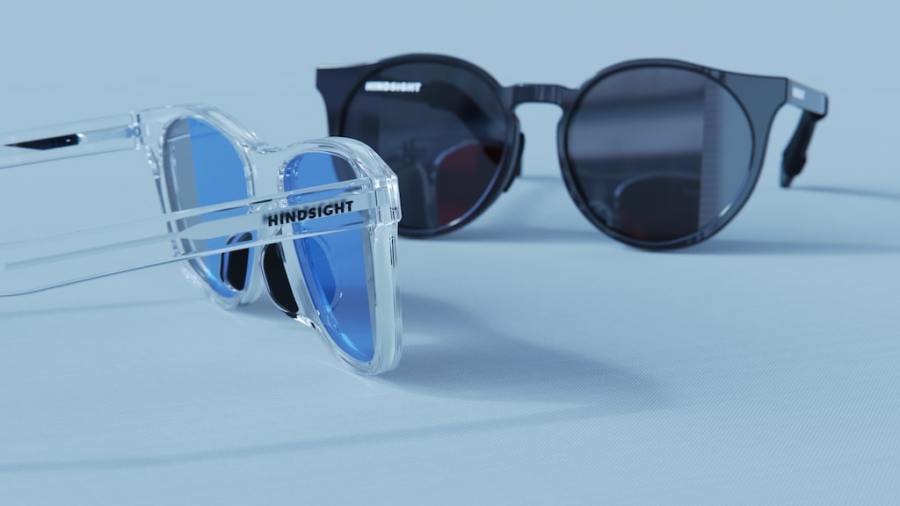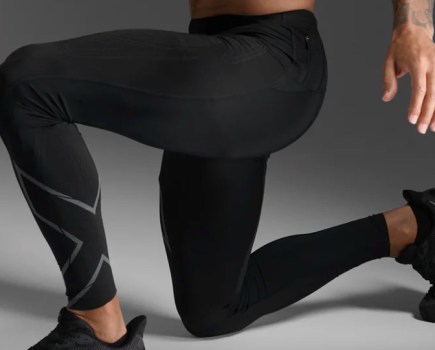In the market for some new cycling tech? Check out our review of the innovative HindSight Rear-View Cycling Glasses
Cyclists need cardio fitness, power, stamina and balance. But while out on hazardous roads, they also need eyes in the back of their head. That, obviously, is an impossibility, but HindSight claim to offer the next best thing. To see what all the fuss is about, we decided to give them a go and find out if they’re worthy of a place among the best cycling glasses on the market.
Men’s Fitness verdict
Ever wish you could swivel your neck like an owl while cycling? These glasses offer a similar effect, giving you a better view of what’s around you, hopefully quashing some of that road anxiety.- Clever idea, well executed
- Have a sense of style
- Potentially distracting for some riders
How we test cycling glasses
Our cycling product testers put each pair through their paces, wearing them on extended rides on a variety of terrain and different lighting conditions to see which were best for overcast, bright and changing light and whether they shone particularly on road or off-road cycling sessions. They looked at comfort and fit, lens quality and ventilation, as well as price, availability, product options and durability before awarding an overall score.

Using patented ‘rear view mirror’ technology, these glasses promise to enable you to see what’s behind you as you ride. That should mean you will feel safer out on public roads, and you won’t mess up your aerodynamic silhouette by repeatedly twisting your head to glance over your shoulder. Quite a feat, if they do actually do what they say on the tin. Before I delve into my own experience with these glasses though, I want to tell you a little bit about how they came to be in the first place.
The history of HindSight glasses
HindSight is the creation of Alexander Macdonald, a physicist with a passion for cycling. But the glasses also draw on the knowledge of award-winning optical engineer Bob Henderson, and feature input from elite athlete ambassador Callum Skinner, a gold medalist in the team sprint at Rio 2016.
The story began with a few sketches in a basement flat, after Macdonald suffered one near miss too many on busy city roads – an experience that I’m sure many of you reading this could empathize with. The idea then moved through a successful Kickstarter campaign in 2020. And the final product is now exciting commuters and road cyclists around the country. So, how do they work?
How do the HindSight Rear-View Cycling Glasses work?
The secret to HindSight products are the two-part angled lenses. With a special reflective mirror located in the sides of the lenses, you can see what is happening behind you. This means you’ll know when a car is about to overtake you, or another rider is about to fly past.
In fact, I found that by turning my head just a few degrees, I could pan my entire rear field of view. And the brand’s True Mirror technology means that objects are exactly as far as they seem. This mirrored section is also semi-transparent, to ensure your forward vision is not impaired.
There are several models now available, from the stylish Edge Sport to the retro Edge Hemp. But the latest versions include the more lifestyle-focused Morpheus and Artemis styles. These combine an urban look with attention-grabbing lenses in green, blue and red shades.
The latest models of the glasses still feature the patented rear-view lenses. But in these new versions, the lenses have been integrated into the frames, making them lighter and stronger. The result, I found, is a set of glasses which keep you safe on the bike, and ensure you look good off it.
What other cycling glasses should I consider?
Let’s be honest, as innovative as these HindSight glasses are, they aren’t going to be everyone’s cup of tea. So, it’s only fair that I offer you some alternatives. Top of my list is the Oakley Plazma, with Sapphire polarized lens. These glasses might not give you rear-view vision, but they do a remarkable job of offering you the best possible clarity through your regular field of vision. That, of course, is down to the polarized lens. However, in general, polarized lenses aren’t super popular in the context of cycling glasses. Some riders can find the occasional flares you get to be too distracting, so it’s worth testing them out in person first if you can.
Alternatively, there are some cycling glasses which excel in specific lighting conditions. For example, if you usually cycle through forests with changing, cascading light, then the Oakley Kato with Prizm Trail Torch lenses are ideal. By contrast, if you live somewhere where there’s almost always sharp sunlight, it would be worth considering Panda Fixed Sport glasses with the Hot Ice lens instead.







